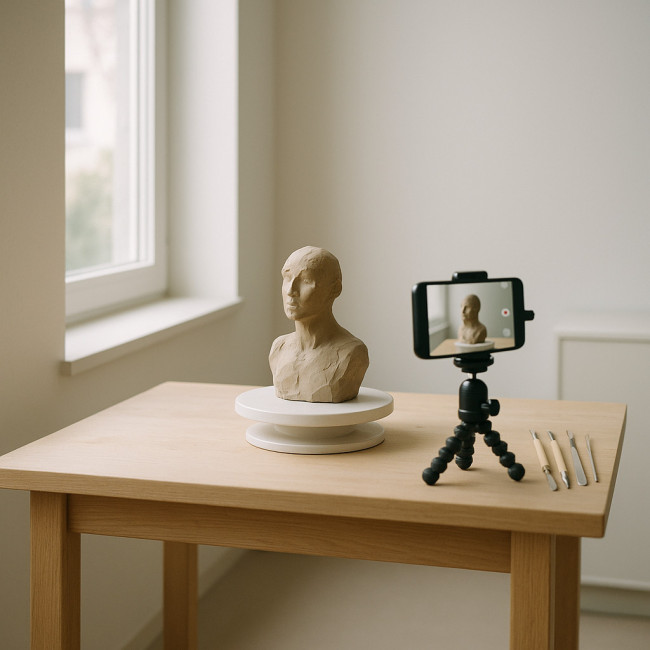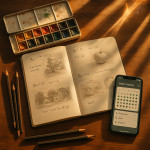Self-hosted sculpture practice routines that fit tight studio schedules
No time for lengthy masterclasses? Discover how to squeeze high-impact, self-hosted sculpture drills into the busiest studio calendar. This guide gives you a proven framework, practical timers, and motivation hacks so you progress every week without blowing up client deadlines or family life.
Why self-hosting your practice beats waiting for perfect conditions
Most sculptors juggle commissions, admin and shipping runs. Waiting for a free afternoon often means practice never happens. By bringing the routine into your current workspace and splitting it into bite-size segments, you:
- Cut set-up time to under three minutes.
- Turn dead gaps—like kiln warm-up or file exports—into skill reps.
- Own the pace instead of syncing with external class timetables.
Artists who ran self-hosted routines for six weeks reported a 28 % jump in form accuracy and a 35 % reduction in abandoned pieces, according to a 2023 Craft Council survey.
The weekly micro-routine framework
Below is a template you can copy into any calendar app. The goal: five practice “windows” totalling just 2 h 30 m across the week.
1. Daily five-minute warm-ups
Keep a fist-sized clay ball or wax block at arm's reach. The rule is simple: each time you unlock your phone, run a five-minute tactile drill first—pinches, coils, or thumb-press spirals. You'll clock 20–30 minutes of unplanned practice every day without noticing.
2. Two 25-minute focus blocks (Pomodoro style)
- Monday: Gesture maquettes in aluminium wire. Finish three poses.
- Thursday: Surface tests—tool marks, sponges, fabric impressions on scrap slabs.
Set a timer for 25 minutes, rest five, repeat once if time allows. The famous Pomodoro structure has near-universal adoption because the brain stays in flow yet resists burnout.
3. One 45-minute problem-solving lab
Pick a single pain-point—say, drapery folds or dynamic balance—and shoot a reference video of your own body with a phone tripod. Sculpt a mini study while the clip plays on loop. Self-filming gives you infinite poses without a model fee.
4. Weekend “sprint” — 60 minutes
This slot pushes material volume. For example, rough-block a bust in water-based clay, aiming for silhouette only. No details, no smoothing. The intensity builds muscle memory faster than slow perfectionism.
Source : Craft Council
Essential equipment checklist for tight spaces
| Tool | Compact alternative | Storage footprint |
|---|---|---|
| Standing armature stand | Clamp-on desktop vise | Drawer-size |
| Full turntable | 6″ mini lazy Susan | Shoe-box |
| Large loop tools set | Three interchangeable micro-loops | Pencil case |
| Plaster mixing vat | Collapsible silicone bowl | Flat pack |
For more granular tips on tool downsizing, explore our guide to rapid clay skill sprints that keep benches clutter-free.
Digital complements: capture, preview, iterate

A smartphone tripod costs less than a single modelling rake yet unlocks huge learning value. Record 360° spins of each session and overlay them with virtual grids. When you're ready to upgrade, 3-D scans and AR mock-ups let you test proportions on screen before committing to stone or bronze. This simple capture loop turns every study into a repeatable lesson, builds an indexed video library you can revisit for critique, and makes progress visible in a way that raw memory never can, transforming tiny sessions into data-rich breakthroughs.
Need eco-conscious materials while you experiment? Our sustainability playbook on low-carbon clay, metal and resin keeps trials planet-friendly.
Motivation & progress tracking hacks
- One-photo rule: Snap the day's study and store in a cloud folder titled by week number. Visual streaks beat numeric logs.
- Progressive overload: Every third week, add 10 % volume—more clay, bigger wire gauge, or taller armature.
- Peer accountability: Post your miniatures in the Artfolio practice forum for quick critiques and cross-disciplinary tips.
Common mistakes that derail tight-schedule practice
- Over-detailing early: Spend 80 % of micro-sessions on mass, not texture.
- Ignoring ergonomics: Raise the work to chest level to avoid neck strain.
- Skipping clean-up buffers: Reserve the last three minutes for wiping tools so the next window starts friction-free.
- Equipment blind spots: Neglecting protective coatings can ruin finished clay when you rush to pack for global shipments.
Quick self-assessment quiz
FAQ
- Can I replace clay with digital sculpting for these routines?
- Yes. Swap the five-minute warm-ups for quick ZBrush dynamesh sketches and keep the same timers.
- How do I avoid drying out unfinished clay in short sessions?
- Mist the surface, wrap loosely in plastic and store under a damp towel. It takes less than one minute.
- What if my studio is also my living room?
- Use foldable mats and collapsible bowls from the checklist to convert and reset the space in two minutes.
- Are self-critiques enough without a mentor?
- Combine daily photo logs with fortnightly peer feedback in online groups to catch blind spots early.
Ready to level up?
Download our free “7-day micro-practice planner” and start tracking progress today. Consistency, not length, is what sculpts mastery.











